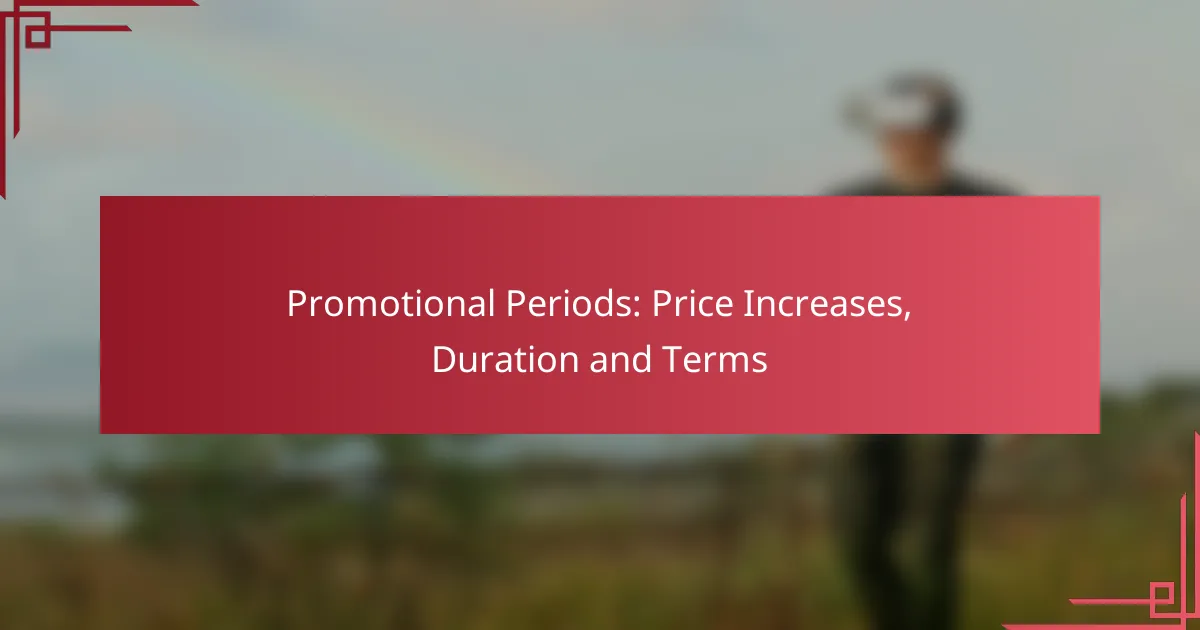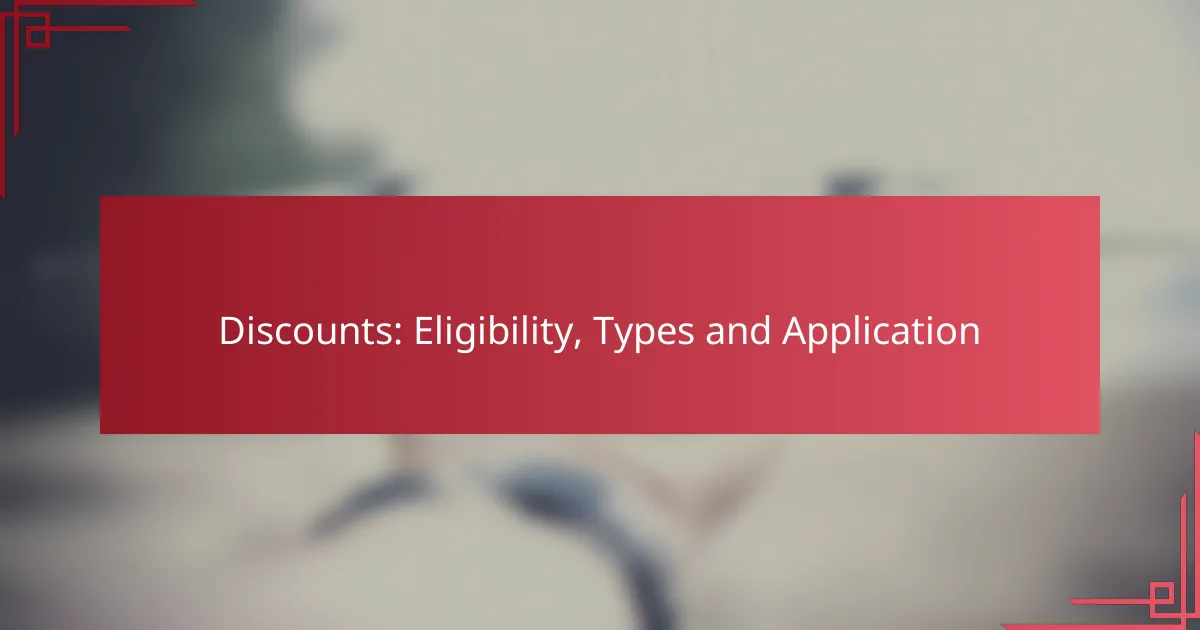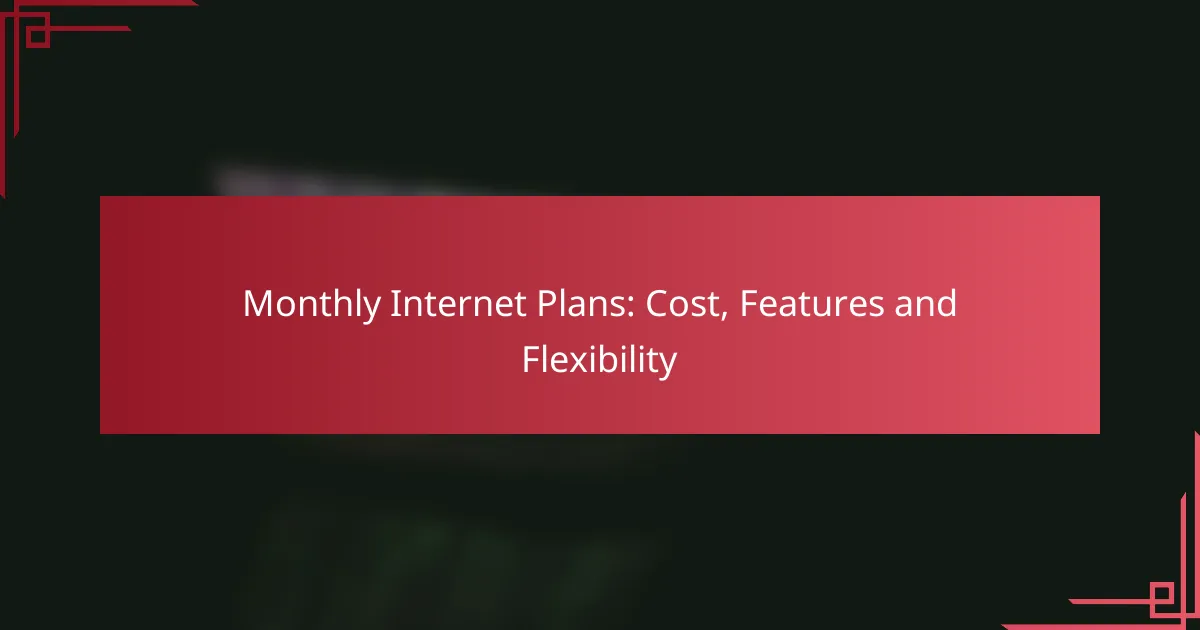Promotional periods play a crucial role in shaping consumer behavior by offering temporary price reductions and special offers. These promotions can last from a few days to several months, allowing consumers to capitalize on discounts while helping businesses achieve their marketing objectives. Additionally, understanding the terms governing price increases is essential for both consumers and businesses, as they provide clarity on when and how prices may change.

How do promotional periods affect pricing in the US?
Promotional periods in the US often lead to temporary price reductions or special offers designed to attract consumers. These pricing strategies can significantly influence purchasing decisions and market dynamics during the promotional timeframe.
Impact on consumer behavior
Promotional periods typically create a sense of urgency among consumers, encouraging them to make quicker purchasing decisions. This urgency can lead to increased sales volume, as shoppers perceive limited-time offers as opportunities to save money.
Additionally, consumers may develop brand loyalty during promotional periods if they feel they are getting good value. This loyalty can translate into repeat purchases even after the promotional pricing ends.
Examples of price changes
Common examples of price changes during promotional periods include discounts ranging from 10% to 50% off regular prices. Retailers often implement these discounts during holidays, back-to-school seasons, or special events.
For instance, a popular electronics retailer might reduce the price of a laptop from $1,000 to $800 during a holiday sale. Such price changes can attract more customers and boost overall sales during the promotional period.
Market trends during promotional periods
Market trends during promotional periods often show spikes in consumer spending, particularly in sectors like retail and e-commerce. These trends can lead to increased competition among businesses, as they strive to offer the most attractive deals.
Moreover, data indicates that promotional periods can shift consumer preferences, with many shoppers becoming more price-sensitive. This shift may prompt businesses to adjust their pricing strategies to remain competitive in the long term.
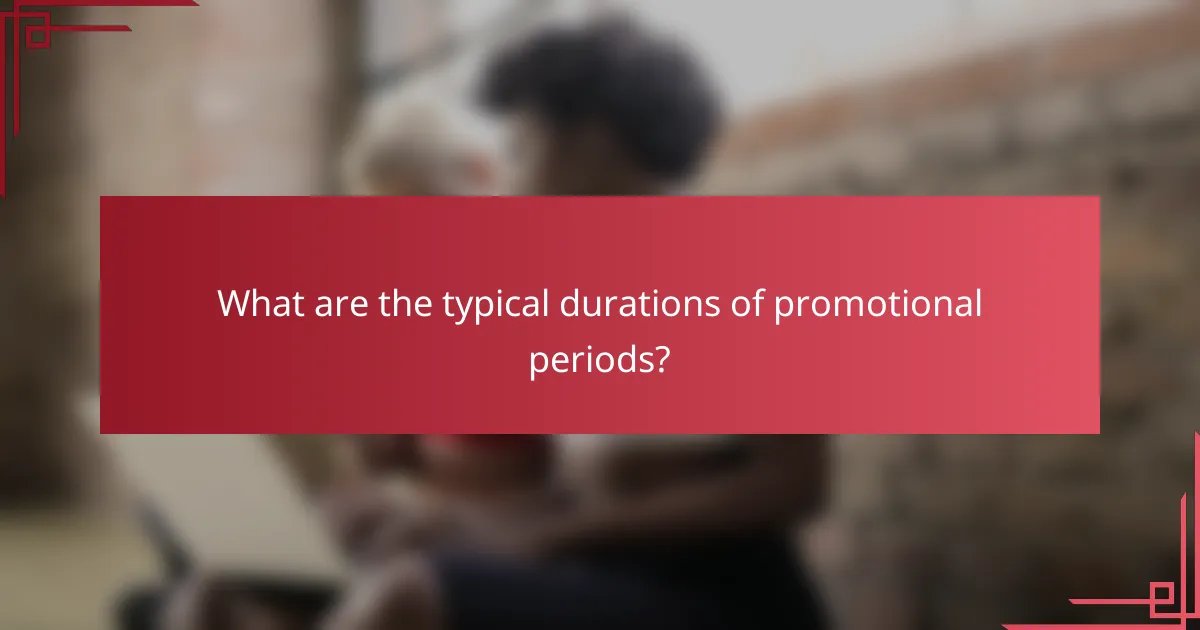
What are the typical durations of promotional periods?
Promotional periods usually last from a few days to several months, depending on the type of promotion and the business goals. Understanding these durations helps consumers take advantage of discounts and businesses plan their marketing strategies effectively.
Common promotional timeframes
Promotions often fall into specific timeframes such as short-term, medium-term, and long-term. Short-term promotions typically last from a few days to a couple of weeks, while medium-term promotions can span from one month to three months. Long-term promotions may extend beyond three months and are often tied to seasonal sales or major events.
For example, a store might run a flash sale for a weekend, while a holiday promotion could last for an entire month leading up to the holiday. Businesses should evaluate their objectives to choose the appropriate timeframe for their promotions.
Seasonal variations in promotions
Seasonal promotions are influenced by holidays, weather changes, and consumer behavior patterns. Common seasonal promotions occur during major holidays like Christmas, Black Friday, and back-to-school periods, often lasting several weeks. During these times, businesses may offer significant discounts to attract customers.
Additionally, some promotions align with seasonal trends, such as summer sales for outdoor products or winter discounts for heating appliances. Businesses should consider these seasonal variations to optimize their promotional strategies and maximize customer engagement.
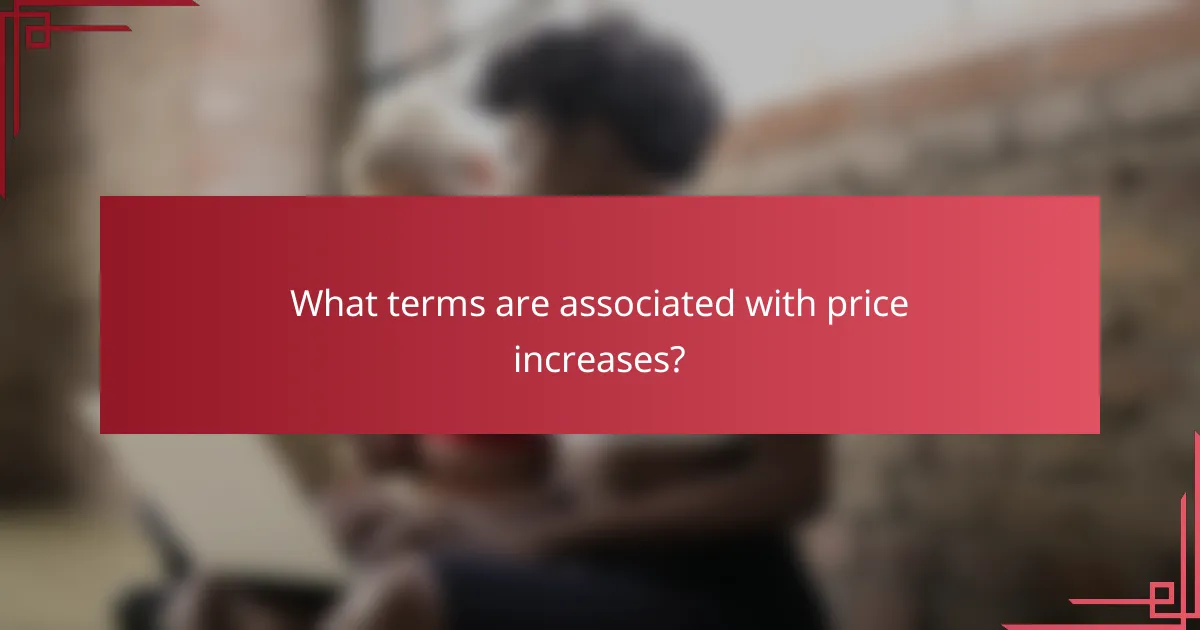
What terms are associated with price increases?
Price increases are typically governed by specific terms outlined in contracts or agreements. These terms define how and when prices may rise, ensuring transparency and predictability for consumers and businesses alike.
Definition of price increase terms
Price increase terms refer to the specific conditions under which a seller may raise the price of goods or services. These terms usually include the duration of the promotional period, the percentage increase allowed, and any notice requirements for consumers. Understanding these terms is crucial for both parties to manage expectations and avoid disputes.
For example, a contract might state that prices can increase by up to 10% after an initial promotional period of six months. This allows consumers to anticipate potential costs while providing sellers with the flexibility to adjust prices based on market conditions.
Common contractual terms
Common contractual terms associated with price increases include escalation clauses, notice periods, and caps on increases. An escalation clause specifies the conditions under which prices may rise, while notice periods dictate how much advance warning a seller must provide before implementing a price increase.
Additionally, some contracts may include caps on price increases to protect consumers from sudden spikes. For instance, a contract might limit increases to a maximum of 5% per year, providing a safeguard against excessive pricing. Always review these terms carefully to understand your rights and obligations.
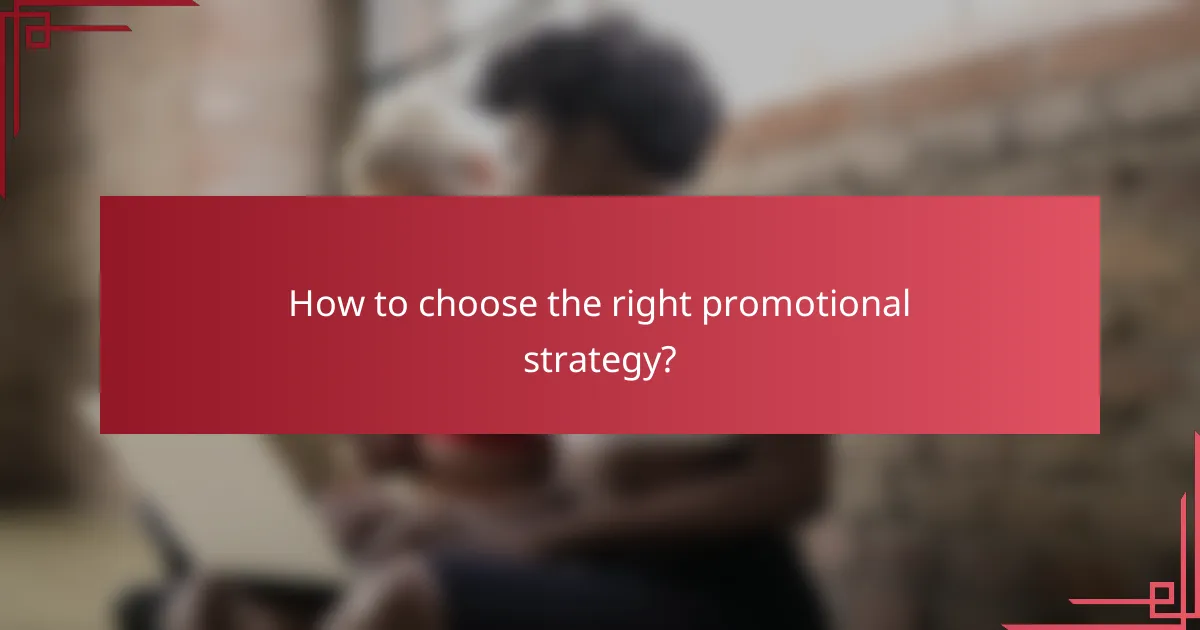
How to choose the right promotional strategy?
Selecting the right promotional strategy involves understanding your target audience, setting clear objectives, and evaluating the competitive landscape. Consider factors such as pricing, duration, and terms to create an effective promotion that resonates with customers and drives sales.
Factors influencing strategy selection
Key factors that influence the choice of promotional strategy include target market demographics, product lifecycle stage, and competitive positioning. For instance, a new product may benefit from introductory pricing, while an established product might leverage loyalty discounts to retain customers.
Additionally, consider the duration of the promotion. Short-term promotions can create urgency, while longer campaigns may build brand awareness. Evaluate your budget and resources to ensure the strategy aligns with your overall marketing goals.
Case studies of successful promotions
One notable example is a leading coffee chain that offered a limited-time buy-one-get-one-free promotion, which resulted in a significant increase in foot traffic and sales. This strategy effectively attracted new customers while encouraging repeat visits.
Another case involved a popular online retailer that implemented a seasonal discount campaign, providing customers with a 20% reduction on select items. This promotion not only boosted sales during a typically slow period but also increased customer engagement through targeted email marketing.
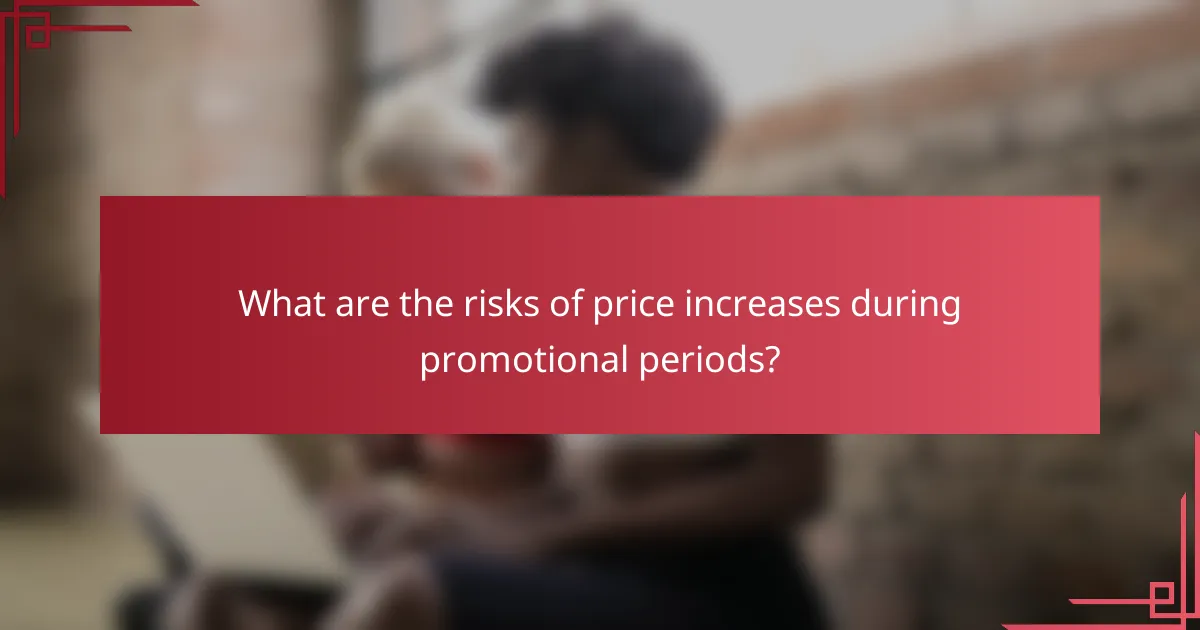
What are the risks of price increases during promotional periods?
Price increases during promotional periods can lead to significant risks, including customer dissatisfaction and damage to brand reputation. Businesses must carefully consider the timing and communication of any price adjustments to mitigate these potential negative impacts.
Potential customer backlash
When prices rise during promotional periods, customers may feel misled or taken advantage of, leading to backlash. This can manifest as negative reviews, social media complaints, or even a decline in sales as customers choose to shop elsewhere.
To minimize backlash, companies should clearly communicate the reasons for the price increase and ensure that it aligns with the perceived value of the product or service. Transparency is key; customers appreciate honesty about pricing changes.
Impact on brand loyalty
Price increases during promotional periods can erode brand loyalty, especially if customers feel they are no longer receiving good value. Loyal customers may switch to competitors who offer better pricing or perceived value, which can have long-term consequences for a brand’s market position.
To maintain loyalty, businesses should consider implementing gradual price increases or offering exclusive benefits to existing customers. Engaging with customers through feedback and addressing their concerns can also help preserve loyalty during challenging pricing changes.
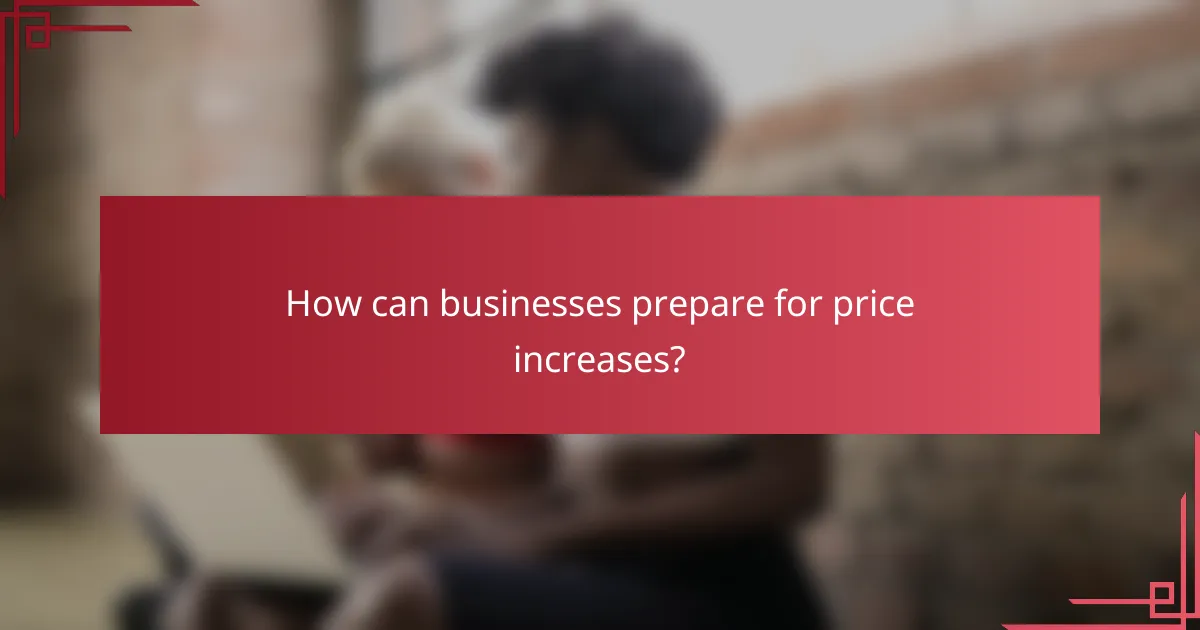
How can businesses prepare for price increases?
Businesses can prepare for price increases by developing a clear strategy that includes effective communication, customer education, and a well-planned timeline. Anticipating customer reactions and addressing their concerns proactively can help maintain trust and loyalty during these changes.
Effective communication strategies
Clear and transparent communication is essential when announcing price increases. Businesses should inform customers well in advance, explaining the reasons behind the increase, such as rising costs or improved services. This helps customers understand the necessity of the change and reduces potential backlash.
Utilizing multiple channels for communication can enhance reach and effectiveness. Consider using email newsletters, social media posts, and website announcements to ensure that all customers receive the message. Tailoring the message to different customer segments can also improve engagement.
Customer education on pricing
Educating customers about pricing can foster understanding and acceptance. Provide detailed explanations of how pricing structures work, including any added value or benefits that justify the increase. Highlighting improvements in product quality or service can help customers see the rationale behind the change.
Offering resources such as FAQs, webinars, or informational blog posts can further assist customers in understanding the new pricing. Encourage feedback and questions to create an open dialogue, allowing customers to express their concerns and feel heard during the transition.
